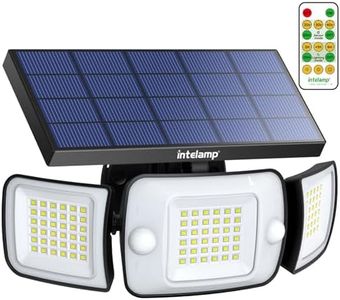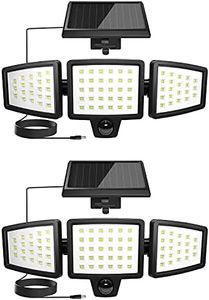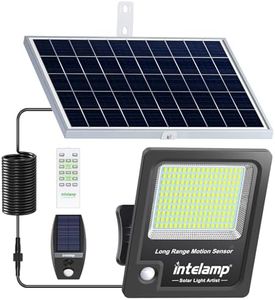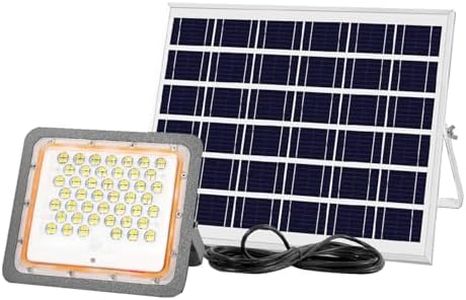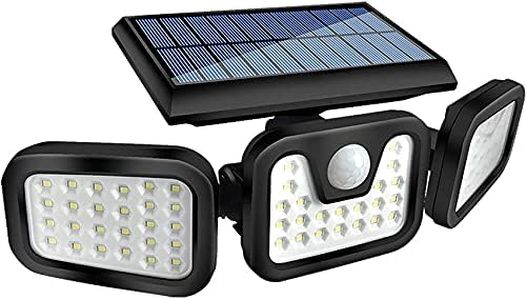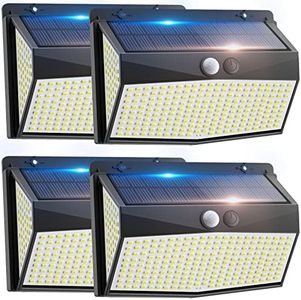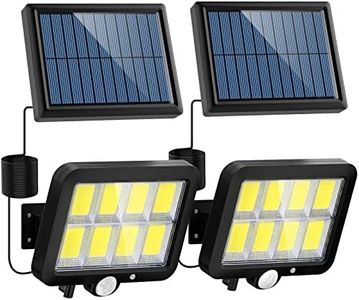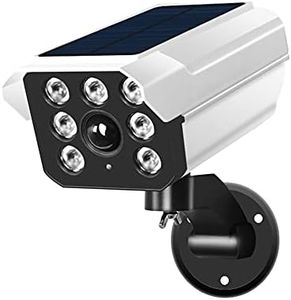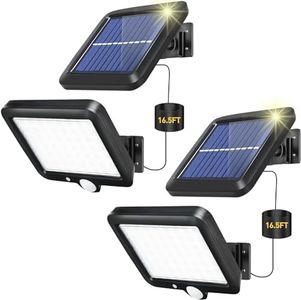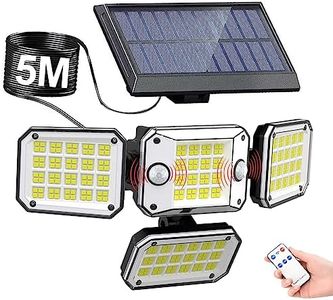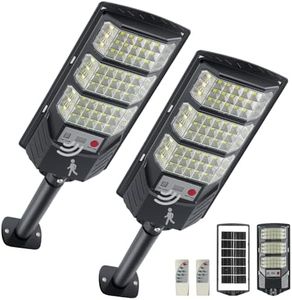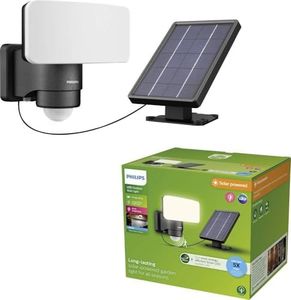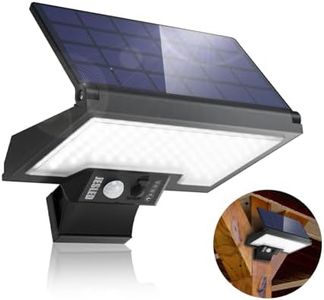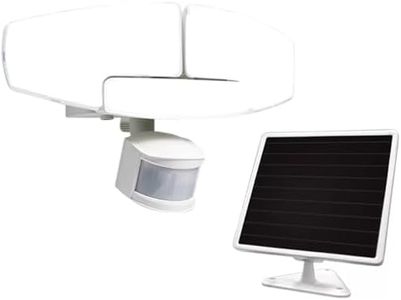We Use CookiesWe use cookies to enhance the security, performance,
functionality and for analytical and promotional activities. By continuing to browse this site you
are agreeing to our privacy policy
10 Best Solar Flood Lights
From leading brands and best sellers available on the web.Buying Guide for the Best Solar Flood Lights
Choosing the right solar flood light involves understanding your lighting needs and matching them with the product’s essential features. Solar flood lights are great for outdoor spaces where you want to add security, increase visibility, or highlight certain areas. The best way to approach your purchase is to think about where the light will be installed, how bright you need it to be, how long you expect it to work at night, and any extra features you might want, like motion sensors or remote controls. By focusing on a few key specifications, you can easily find a solar flood light that meets your expectations and performs reliably.Brightness (Lumens)Brightness, usually measured in lumens, tells you how much light the fixture will produce. This is important because too little light might not provide enough visibility, while too much can cause glare or light pollution. Solar flood lights typically range from 100 to 2000 lumens or more. For small areas such as sheds or pathways, lights under 500 lumens work well. For security lighting over driveways or yards, you might want 1000 lumens and above. Think about your primary purpose: choose lower lumens for accent or ambiance, and higher lumens if safety or strong illumination is your main need.
Battery CapacityBattery capacity determines how long your solar flood light can operate at night. This is usually measured in milliampere-hours (mAh) or watt-hours (Wh). Higher capacity means the light can run for longer hours, especially useful if you want it to stay on all night. Smaller gardens or short-duration uses can get by with lower battery capacity, while bigger yards or security applications need larger capacity. Consider how long you want the light to last after sunset and pick a model that matches your evening needs.
Solar Panel Size and QualityThe solar panel's size and quality affect how quickly and effectively it can recharge the battery. Larger and higher-quality panels charge the battery faster, especially on cloudy days or in partially shaded locations. If you live in a sunny area or can mount the panel in full sun, standard panels are enough. If your area gets less sunlight or you want faster charging, look for bigger panels or those made from efficient solar materials. Assess your mounting location and average sun exposure to guide your choice.
Lighting Modes & ControlsLighting modes and controls determine how the light operates. Common modes include always-on, motion-activated, or dim settings with brighter bursts on motion. Some lights offer remote controls or app compatibility. If you want automatic lighting when movement is detected for security, motion-sensing is best. For continuous lighting, pick always-on. Extra controls add convenience, but aren’t necessary unless you want tailored settings. Choose based on how you want to interact with the light.
Weather Resistance (IP Rating)Weather resistance, often shown as an IP (Ingress Protection) rating, indicates how well the unit handles outdoor conditions like rain, dust, or snow. Higher IP ratings (such as IP65, IP66, or IP67) offer better protection, meaning the light is tightly sealed against water and dirt. For exposed installations or harsh climates, higher weather resistance is crucial. For covered patios or milder regions, a standard water-resistant rating may suffice. Match the rating to your climate and installation spot.
Installation FlexibilityInstallation flexibility refers to how easy and versatile it is to mount the light and its solar panel. Some lights are all-in-one, while others have a separate solar panel, allowing you to place the panel for maximum sunlight and the light for best coverage. If your lighting and sunniest spots don’t align, a model with a long connection cable will help. Think about your space and choose a light that will fit easily and work most efficiently in your intended area.
